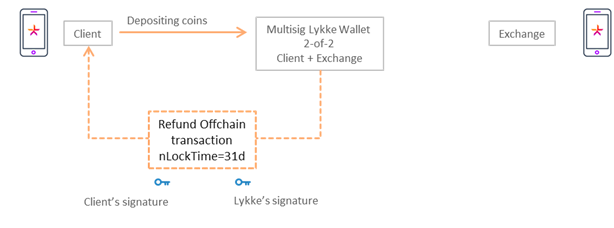The popular cryptocurrency bitcoin was created as a peer-to-peer payment system that allows users to transfer value without the need of a central authority or third party. Despite the decentralized nature of bitcoin and other cryptocurrencies, most users are still relying on centralized exchange platforms to buy or sell these digital currencies.
Centralized exchanges, such as Bitfinex, Coinbase or Kraken, are easy to use, easy to access and many of them provide advanced trading functionalities. However, they also represent a security risk for your funds. Hacks aren’t uncommon event in the cryptocurrency scene, and some, such as the Bitfinex hack, have led thousands of users to lose their money.
Unlike centralized exchanges where users trade through a central intermediary, decentralized exchanges like Bitsquare allow users to connect in a peer-to-peer manner and exchange directly to one another.
Similarly, Lykke, a Swiss startup that is building a global marketplace powered by blockchain technology, offers what CTO and co-founder Mihail Nikulin refers to as a “semi-centralized exchange.”
“This means that the exchange does not take possession of the traded coins, but needs to be trusted to match trades correctly. Lykke has a centralized matching engine and decentralized coins settlement,” he explained in a blog post.
Lykke’s exchange, which runs at Lykke.com, is not a web service. Instead, it runs on a user’s iOS or Android device where he or she keeps the private keys and has access to the full functionality of the market.
Lykke’s matching engine is open source and can handle tens of thousands of transactions per second. It is the result of a programming competition in 2015. To overcome blockchain capacity settlement limitation, Lykke is integrating micropayment channels approach for the safe offchain settlement.
The matching engine takes bid and ask prices from buyers and sellers and makes a real-time match. Once a match is made, the wallet takes over and settles on the blockchain within minutes.
The Lykke Wallet uses multisignature technology, which, in the case of Lykke, requires two signatures to spend coins from it – both the client’s and Lykke’s signatures.
A multisignature wallet provides multiple advantages. First, in the event that the exchange is compromised and the Lykke’s key is stolen, the client will not loose his or her money as the second key is required to spend the deposited coins. Second, it allows coins flow control. Since Lykke’s signature is required for each transaction, deposited coins cannot be transferred outside the exchange without Lykke being aware of it.
Furthermore, to guarantee funds recovery from the multisignature wallet if for instance, Lykke’s private key is destroyed, the company provides offchain “refund transactions.”
 Lykke generates a new refund transaction after each new trade and sends the transaction binary file to the client’s email, which can be used by the client in case of emergency.
Lykke generates a new refund transaction after each new trade and sends the transaction binary file to the client’s email, which can be used by the client in case of emergency.
A refund transaction transfer deposits coins back to the client’s private address. Once the refund transaction is signed by Lykke, the refund can be broadcasted after 31 days. The refund transaction is invalidated each time the client makes a trade that spends “refunded” outputs.
Based in Zug, Lykke Corp. is a fintech company that is building one global marketplace powered by blockchain technology. Founded by Richard Olsen, a pioneer in high frequency finance and the co-founder of OANDA, Lykke seeks to revolutionize the industry by allowing users to trade foreign currencies, equities, commodities and other asset classes on a platform that offers immediate settlement and direct ownership.
The company has subsidiaries that are licensed as financial companies and that are providing broker and trading services for the clients.
Lykke shares are issued in the form of colored coins. Last year, the company ran an initial coin offering campaign which raised CHF 1.16 million. Earlier this month, it announced that its three-week special public offering gathered an additional CHF 2 million and added more than 340 new investors.
Featured image: Lock button on the keyboard by Bloomicon, via Shutterstock.com.






